Analysis of Acylcarnitines in Dried Blood Spots (DBS) Samples by FIA-MS/MS
Arun Babu Kumar Ph.D.1, Sarah Aijaz Ph.D.1, Uma Sreenivasan Ph.D.1 Merck 1 Round Rock, TX, USA
Workflow
Extraction
Analysis
Detection
1. Overview: FIA-MS/MS for Acylcarnitines Analysis in Dried Blood Spots (DBS)
In the 1960s, Robert Guthrie implemented the large-scale use of dried blood spots (DBS) for the screening of newborns for Phenylketonuria (PKU). Since then, the use of DBS in diagnosis has expanded to include a variety of metabolic disorders and other ailments. Tandem mass spectrometry (MS/MS) has developed to be the choice of technique to analyze the DBS samples due to its sensitivity and capacity to multiplex to quantify several analytes simultaneously. MS/MS is widely used in clinical labs for the analysis of acylcarnitine panel in DBS to diagnose several fatty acid oxidation disorders and organic acid disorders.1-3 Flow injection analysis-MS/MS (FIA-MS/MS) is widely used in Tier-1 testing for identification and quantitation of acylcarnitines by direct quantitation against suitable internal standards. 4,5 Figure 1 below shows the overall workflow for the FIA-MS/MS analysis.
Quantification of acylcarnitines using stable isotope-labeled (SIL) internal standards
This article illustrates the utility of accurate and convenient stable isotope-labeled (SIL) internal standard solutions from Supelco for the analysis of acylcarnitine panel by FIA-MS/MS. The solution-based SIL internal standards are certified reference materials (CRMs), eliminating the need for quantitative transfer of lyophilized internal standards prior to dilution and provide accuracy and flexibility to prepare only the required amount of extraction solution with SIL internal standards.
Acylcarnitine DBS reference samples from CDC were used as controls and two levels of control DBS samples from Recipe ClinChek with known concentrations for 13 acylcarnitines were used as samples for the analysis.
2. Detailed Acylcarnitine FIA-MS/MS Workflow
2.1 Acylcarnitine SIL Internal Standards
Stable isotope-labeled (SIL) Acylcarnitine CRM solutions with 13 different heavy atom labeled acylcarnitines were used for the accurate quantification of different acylcarnitine species with the most closely related internal standard. Stable isotope-labeled CRMs in solution form offer greater flexibility, accuracy, homogeneity, and convenience in use than lyophilized materials. CRMs solution eliminates the need for quantitative transfer of lyophilized content for dilution to DBS extraction solution. Figure 2 shows the chemical structures, isotope labeling, and concentrations of the CRMs used as internal standards for the acylcarnitines analysis.
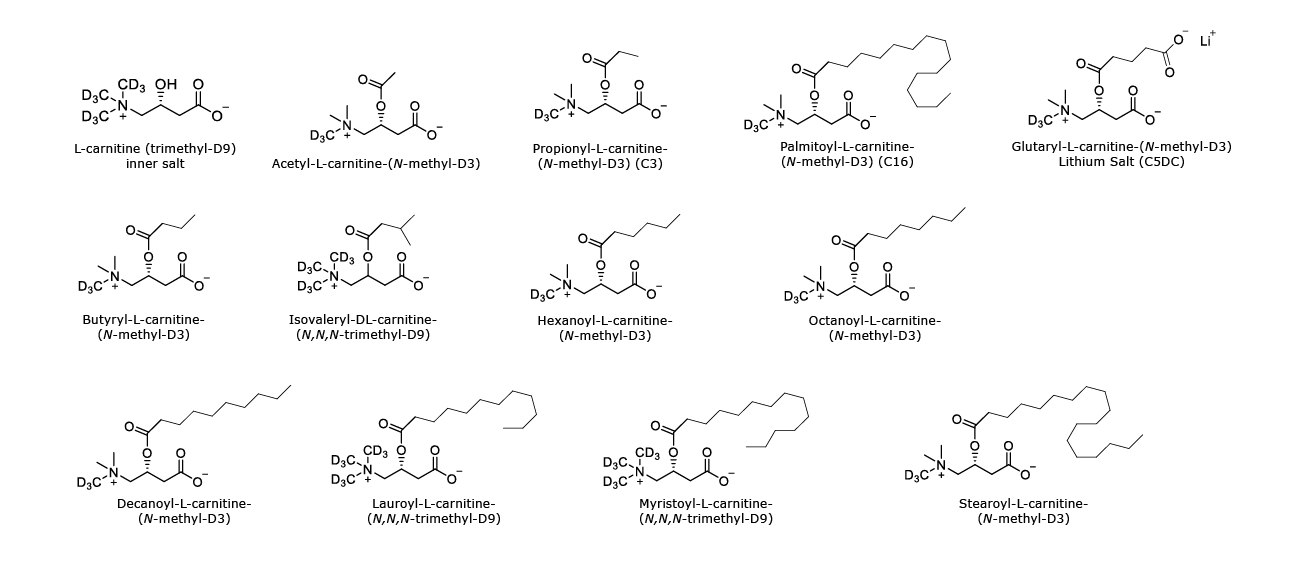
Figure 2.Chemical structures of internal standards used for the acylcarnitines analysis.
2.3 DBS Extraction Solution Preparation
The DBS extraction solution can be conveniently prepared by combining and diluting an appropriate amount of A-148-1ML, A-147-1ML, A-163 -1ML, A-181-1ML, and A-164-1ML in a volumetric flask with methanol (Figure 4). The concentrations of SIL acylcarnitines in the DBS extraction solution thus prepared are given in Table 1.
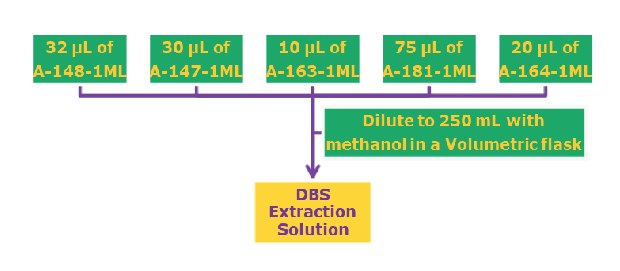
Figure 4.Dilution schematic to prepare DBS extraction solution
The table below describes the steps involved in the Derivatization of DBS extract for enhanced sensitivity in MS.
HPLC Gradient conditions:
MS Source Parameters:
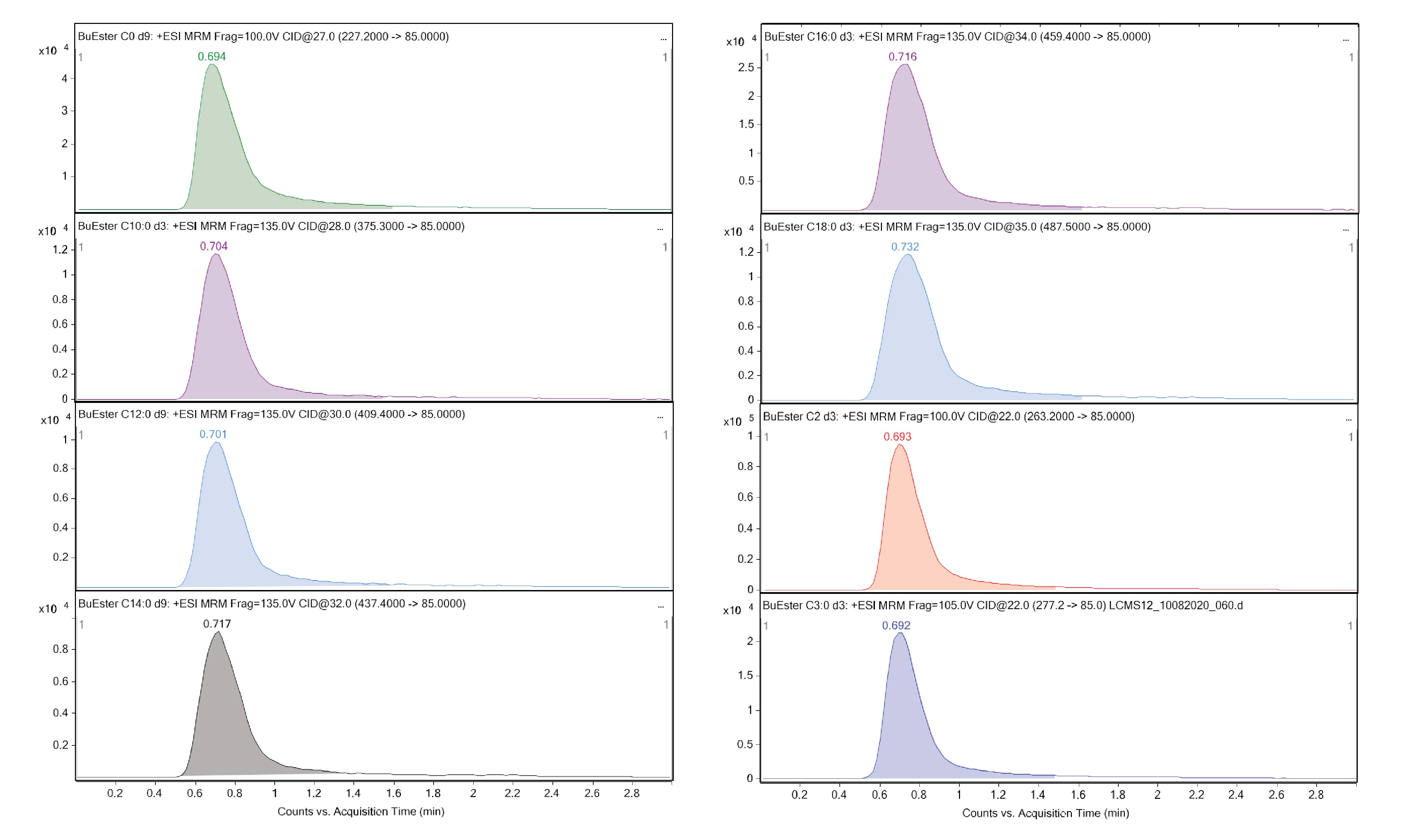
Figure 5.MRM trace for butyl ester derivatized SIL acylcarnitines C0 d9, C10:0 d3, C12:0 d9, C14:0 d9, C16:0 d3, C18:0 d3, C2 d3 and C3 d3
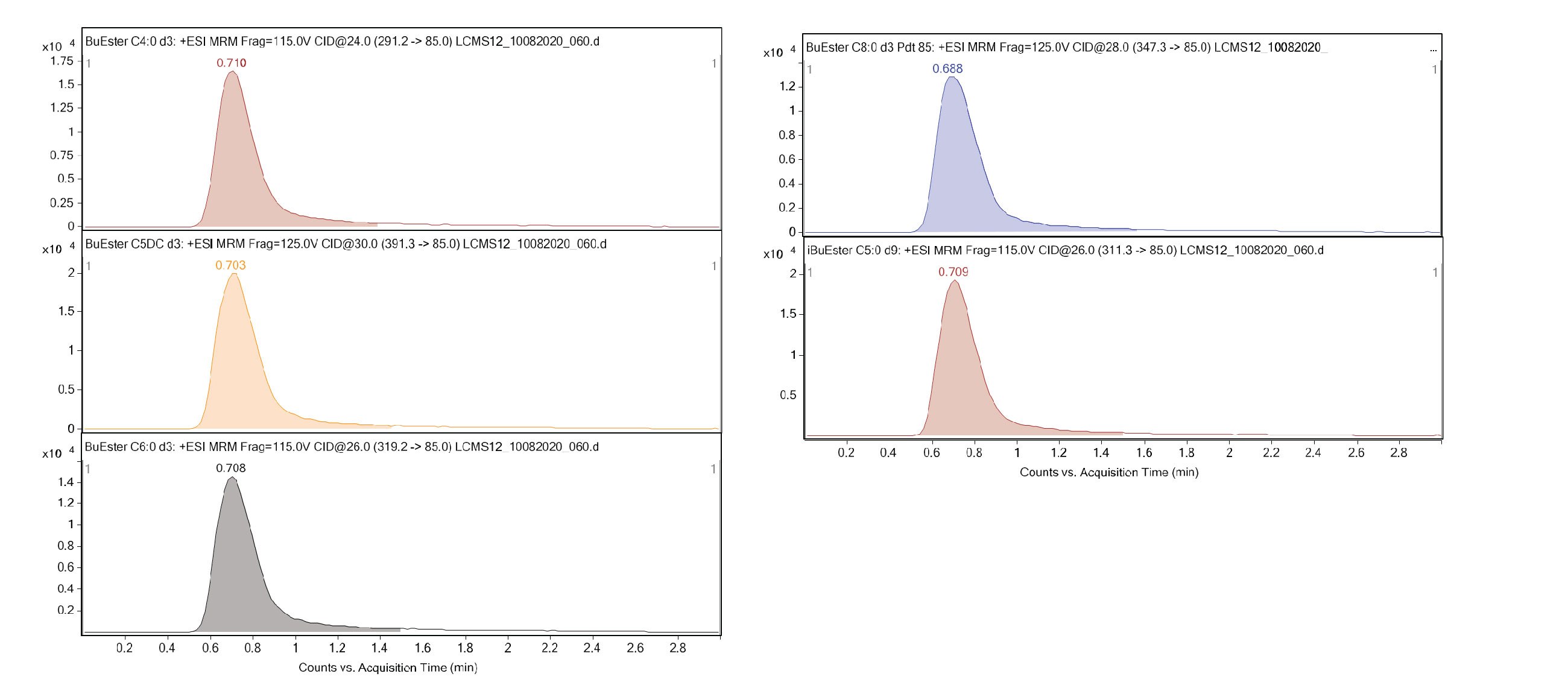
Figure 6.MRM trace for butyl ester derivatized SIL acylcarnitines C4 d3, C5DC d3, C6 d3, C8:0 d3 and iC5 d9
3.2 MRM Chromatogram of Blank and Control Injections
Overlap chromatograms for all MRM transitions that include SIL internal standards and native acylcarnitines are shown in Figure 5. In the first overlapped MRM chromatogram, the control blank injection has a baseline signal for injection of methanol-water mixture. Whereas the second MRM overlap shows the injection of DBS extract from a CDS control sample.
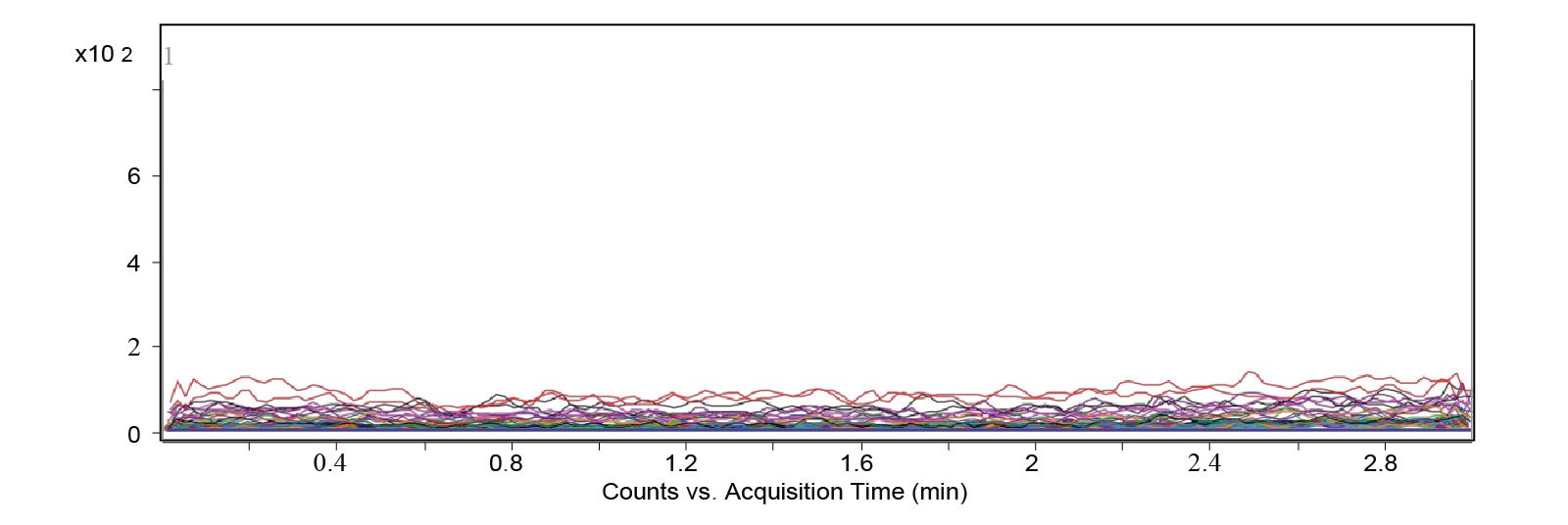
Blank (80:20 methanol/water) injections: Shows no background Interferences for all analytes and SIL Internal Standards
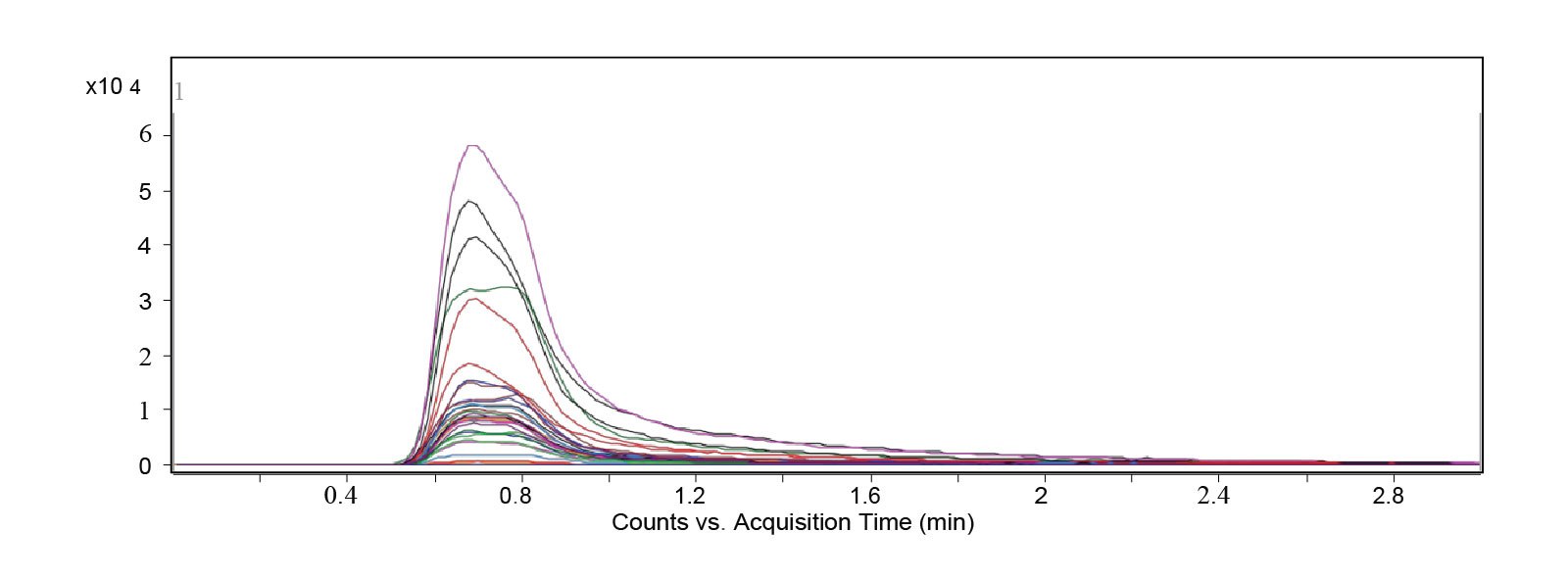
Figure 7.MRM traces for all analytes and SIL internal standards with a blank injection of 80:20 methanol/water (top) and CDC Level-D DBS control (bottom)
Accuracy was demonstrated through quantification of the four levels of control DBS samples from CDC with the known concentration of 20 acylcarnitines. The samples were analyzed (minimum of 3 replicate DBS extractions for each level) and the measured values were plotted against the actual mean concentrations of the control standards.6 As shown in Table 3, the correlation (slope) and R2 is close to 1 for all acylcarnitines, indicative of the good accuracy of the quantification. The correlations are shown graphically in Figures 9 and 10.
In addition, two levels of control DBS samples from Recipe ClinChek with known concentration for 13 acylcarnitines were analyzed (in 6 replicate extractions for each level). As indicated in Table 4, the measured concentrations of all the acylcarnitines were within the expected control range.
Evaluation of measured acylcarnitines concentration vs. actual concentration in CDC control DBS Samples
Evaluation of measured acylcarnitines concentration vs. actual concentration in Recipe control DBS samples
Correlation plots between measured and actual acylcarnitines concentration in CDC control DBS samples
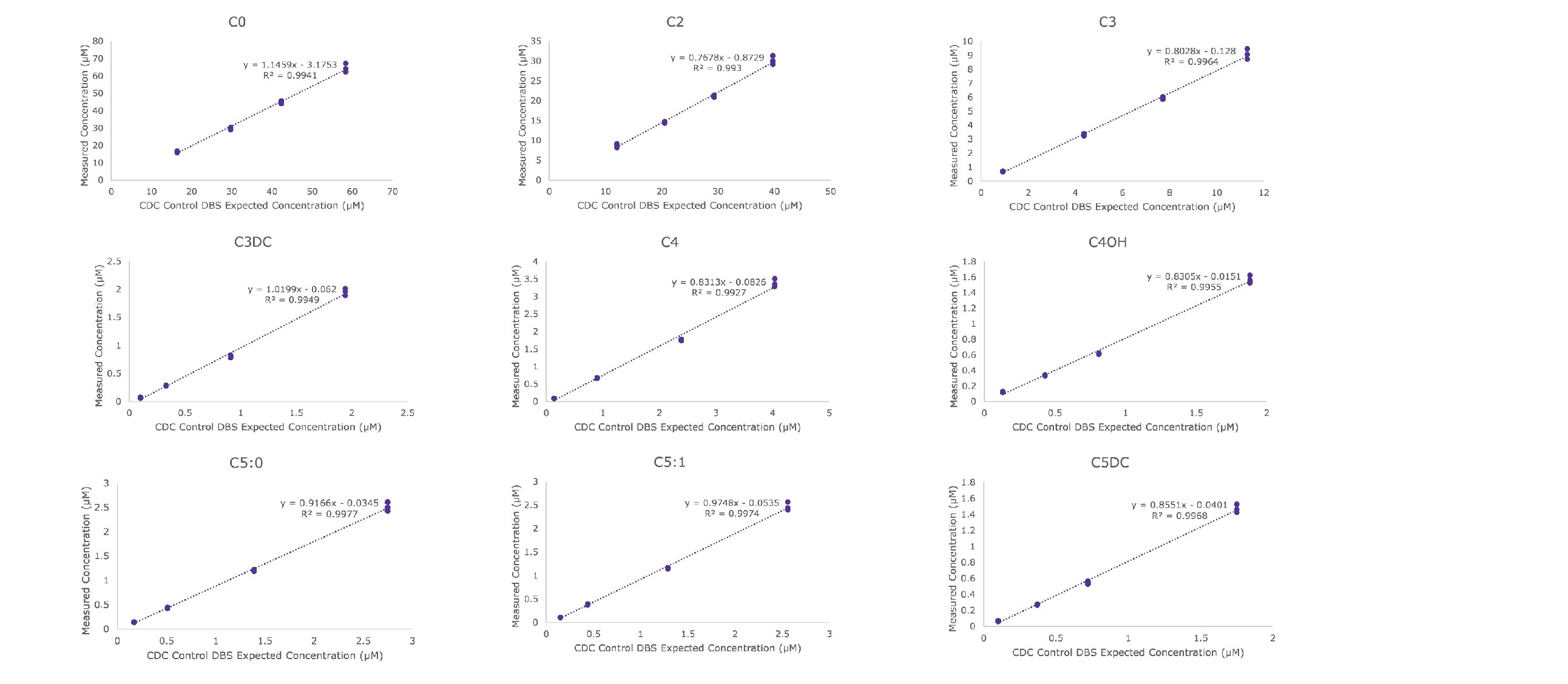
Figure 9. Correlation plot for the comparison of measured concentrations of acylcarnitines (C0, C2, C3, C3DC, C4, C4OH, C5:0, C5:1, C5DC) against the expected concentrations (MS/MS non-kit) in the four levels of CDC DBS controls
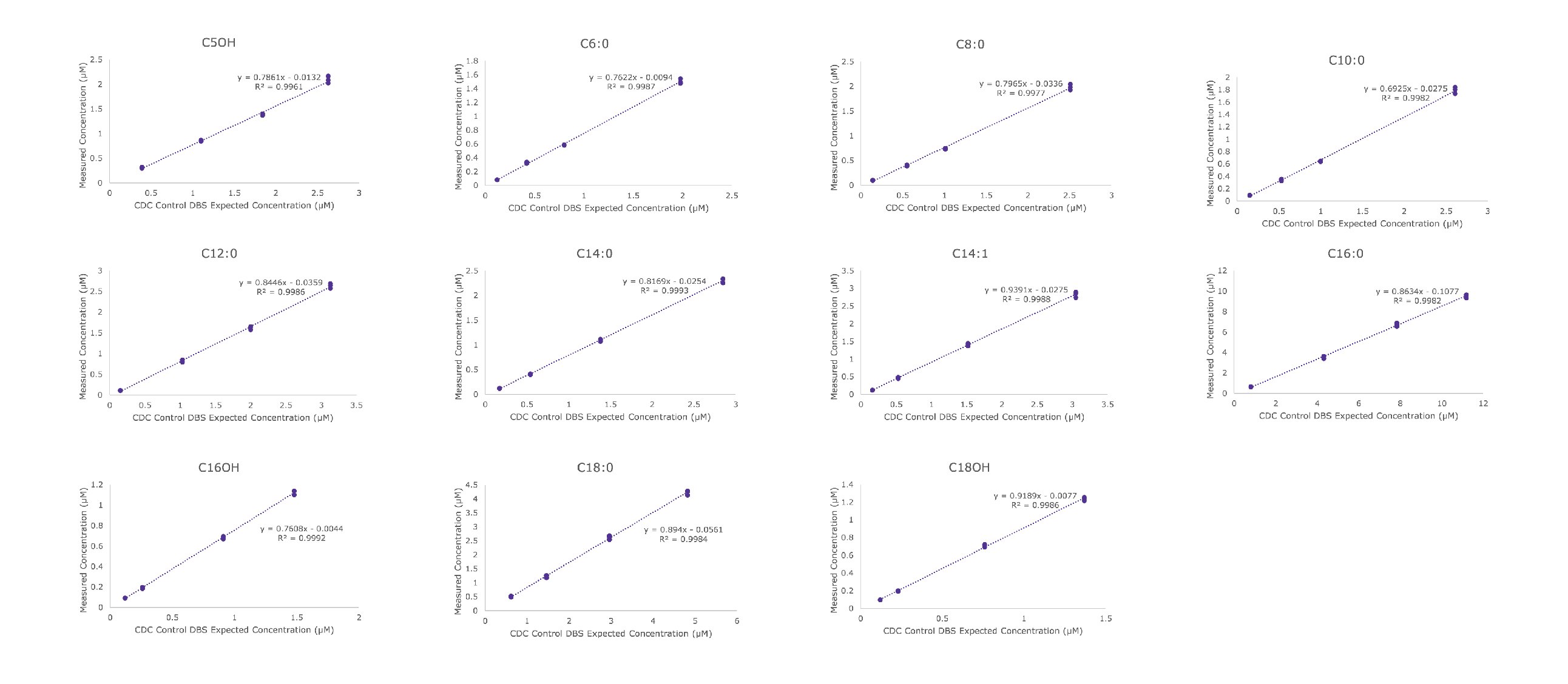
Figure 10.Correlation plot for the comparison of measured concentrations of acylcarnitines (C5OH, C6:0, C8:0, C10:0, C12:0, C14:0, C14:1, C16:0, C16OH, C18:0, C18OH) against the expected concentrations (MS/MS non-kit) in the four levels of CDC DBS controls
4. Conclusion: Quantitative Analysis of Acylcarnitines from Dried Blood Spots
This study illustrates the use of stable isotope-labeled (SIL) Acylcarnitines Certified Reference Materials (CRM) for the quantitation of acylcarnitines in dried blood spots. FIA-MS/MS analysis in combination with the SIL Acylcarnitine CRM solutions from Supelco can be used effectively to accurately measure the concentration of different acylcarnitine species in dried blood spots (DBS). Due to the availability of a wide diversity of SIL acylcarnitine species from Supelco, the SIL Acylcarnitine CRM that is most chemically similar to the analyte could be chosen as the MS/MS reference for the utmost accurate quantification. The SIL CRMs in solutions offer greater flexibility, accuracy, homogeneity, and convenience than lyophilized materials. Solutions allow flexibility to prepare any volume of DBS extraction solution with the reference materials, as desired by the analyst. The CRMs in solution form eliminate the need for quantitative transfer of the lyophilized content for dilution to DBS Extraction Solution. A complete series of native Acylcarnitines Mix CRM solutions are also available from Supelco for instrument calibration, controls, and MS/MS tuning.
Materials
References
To continue reading please sign in or create an account.
Don't Have An Account?